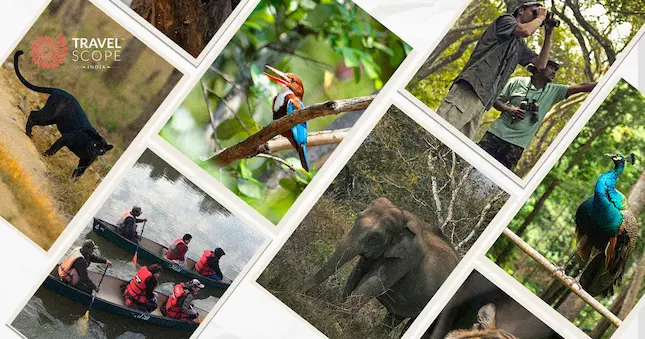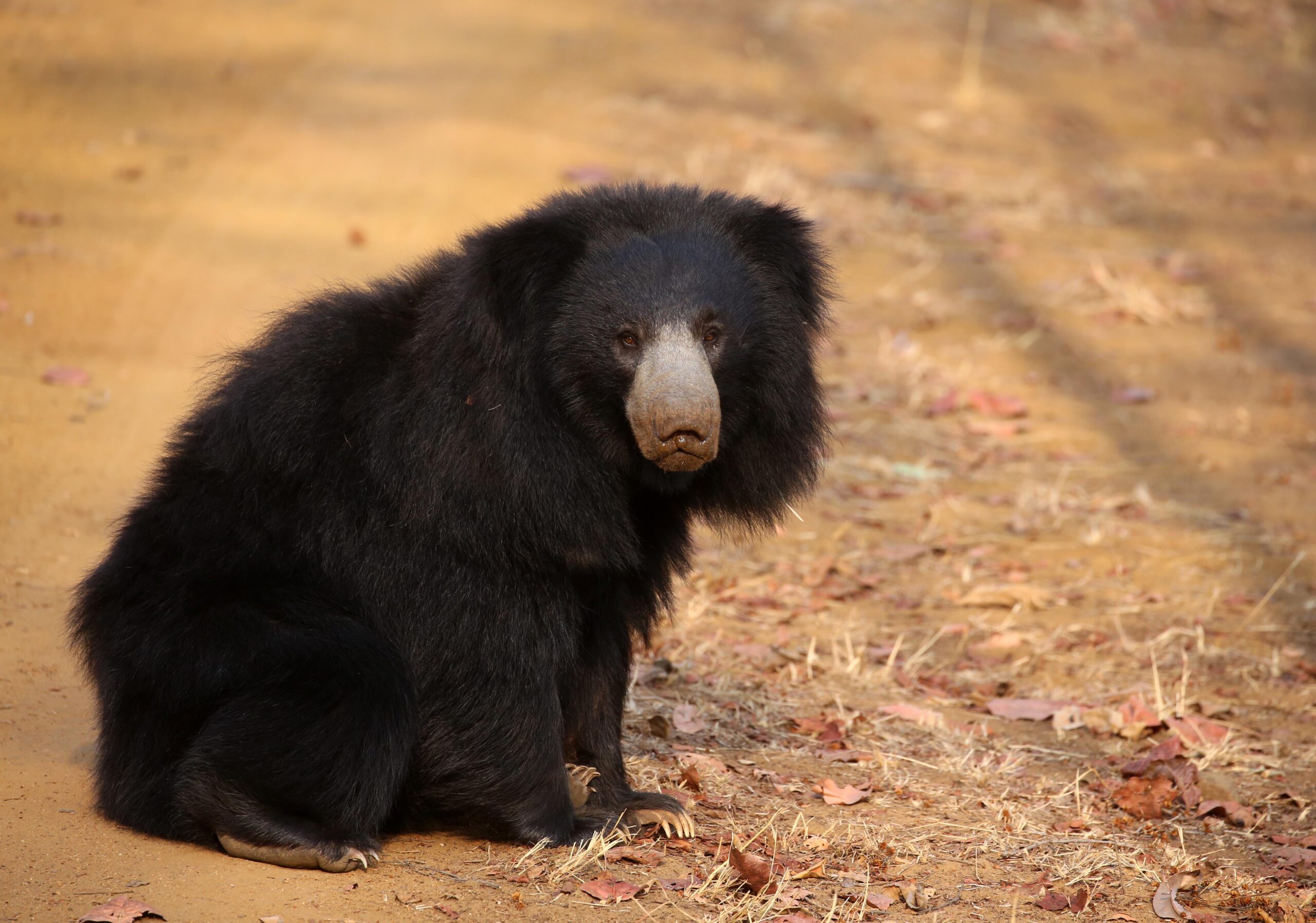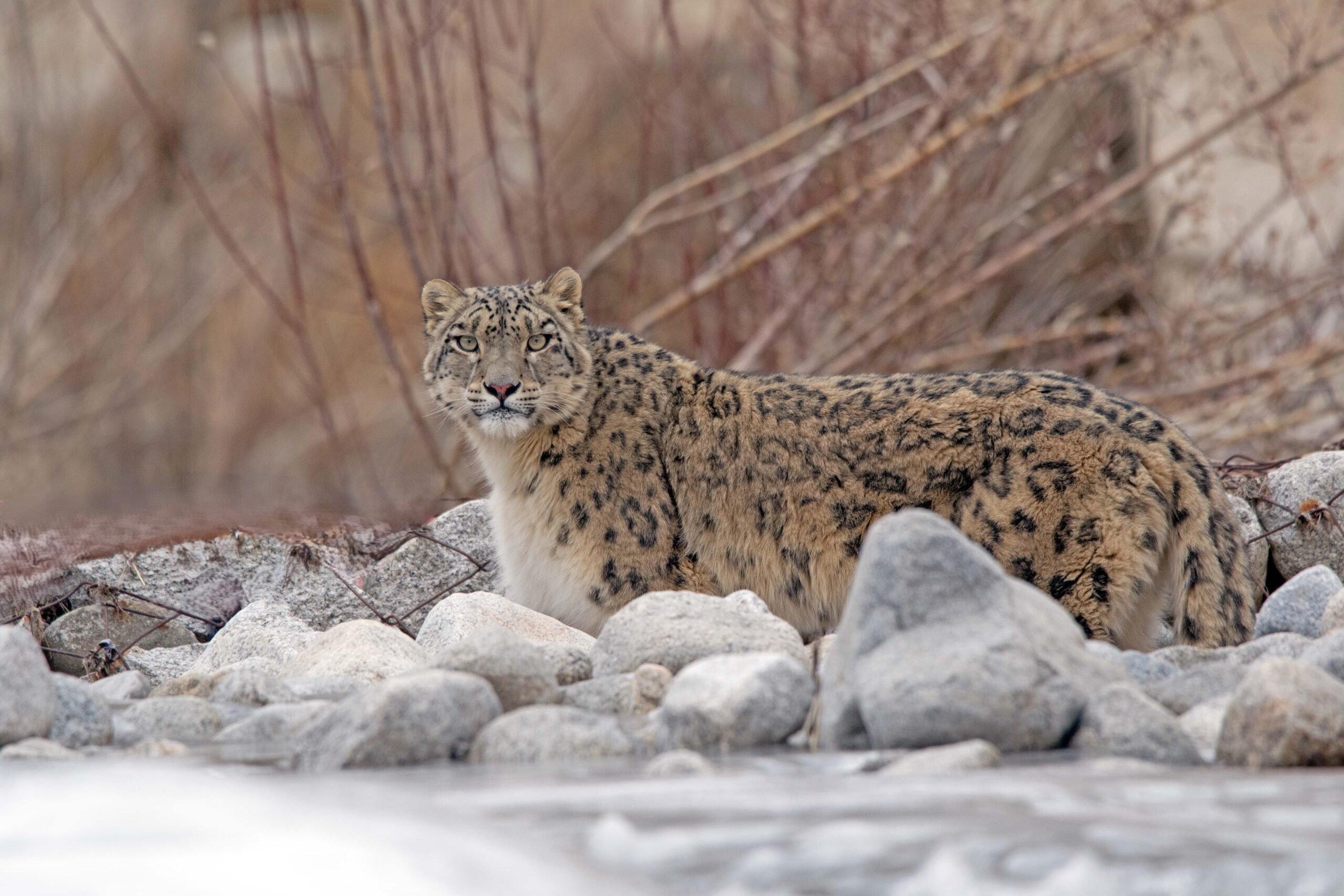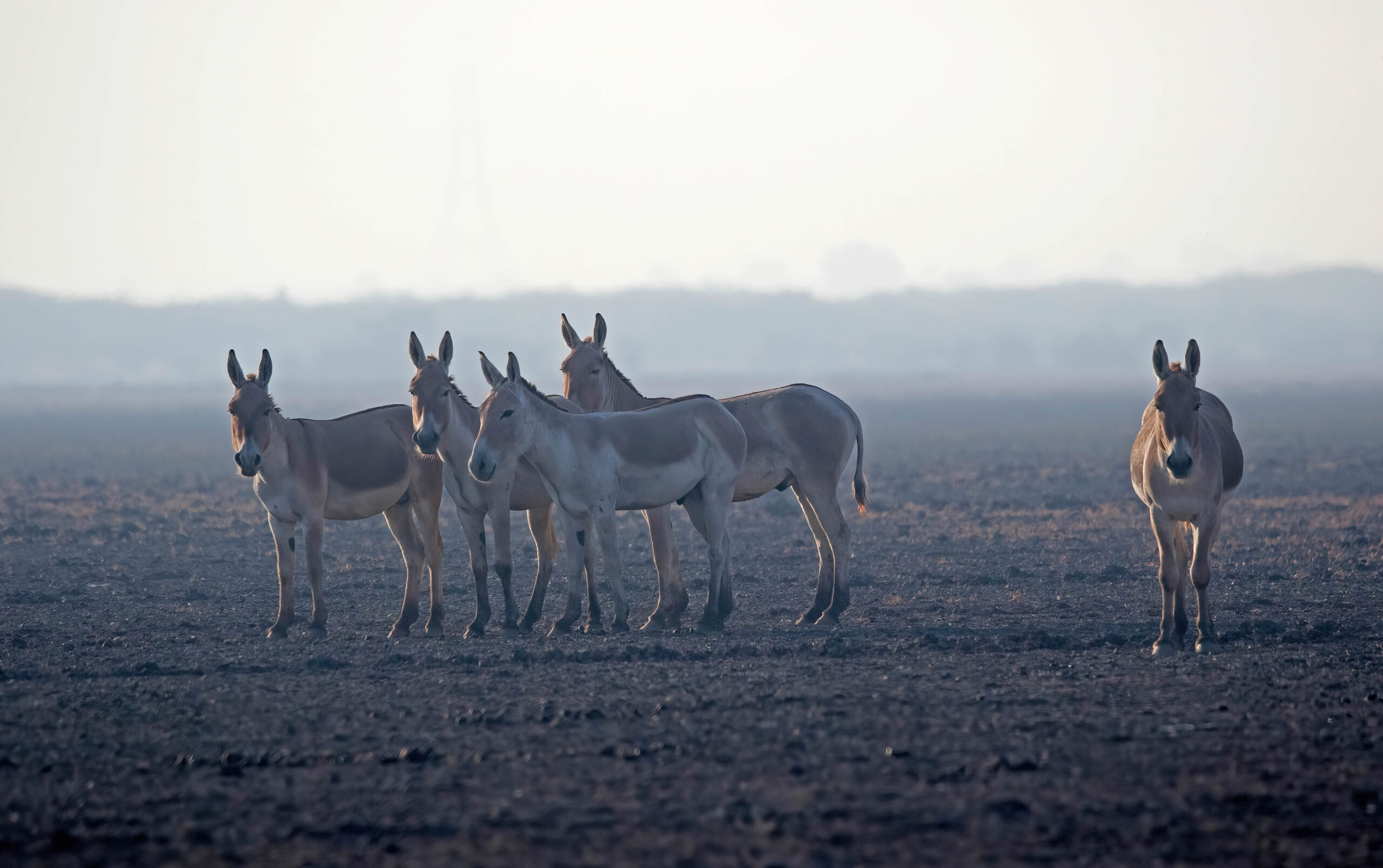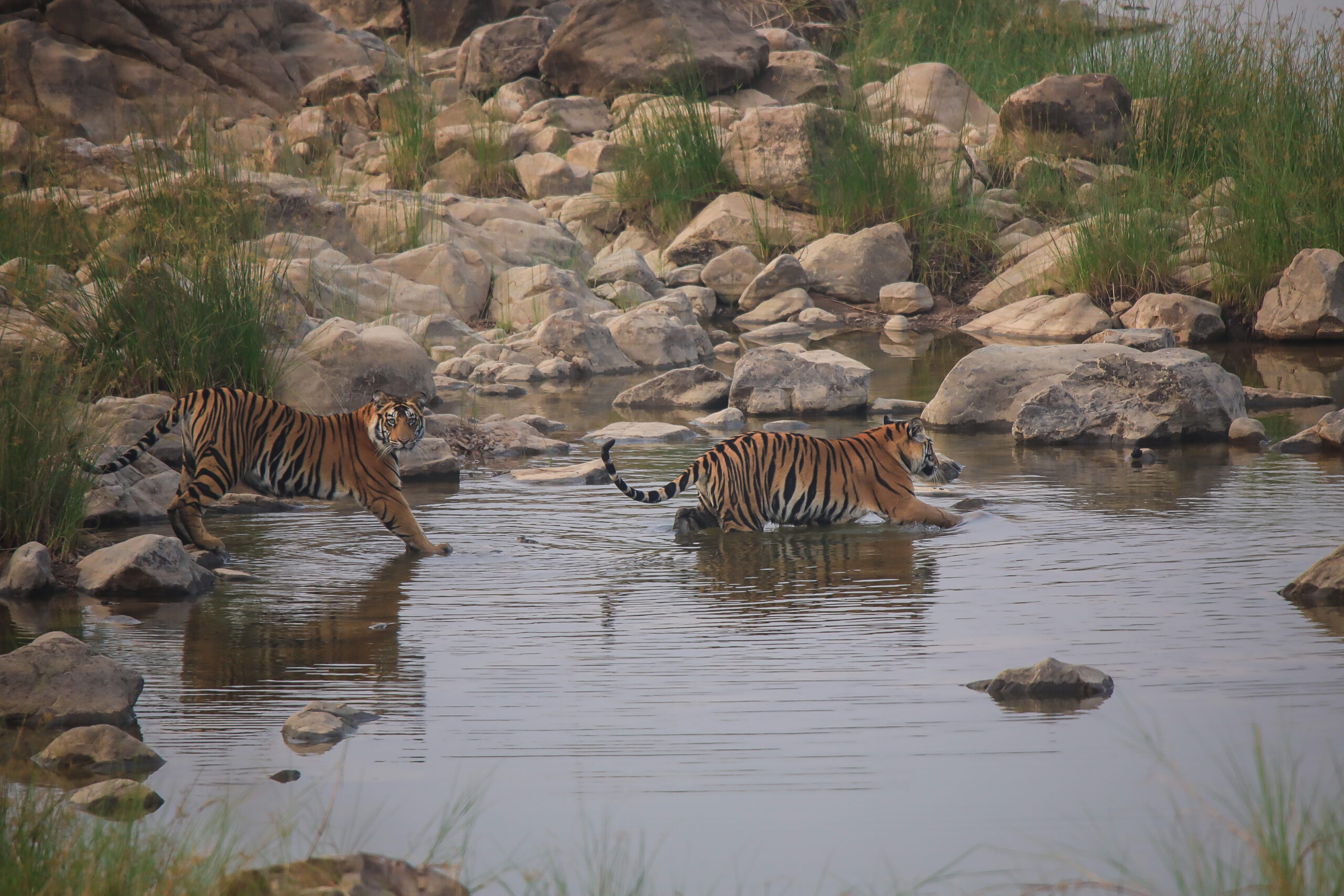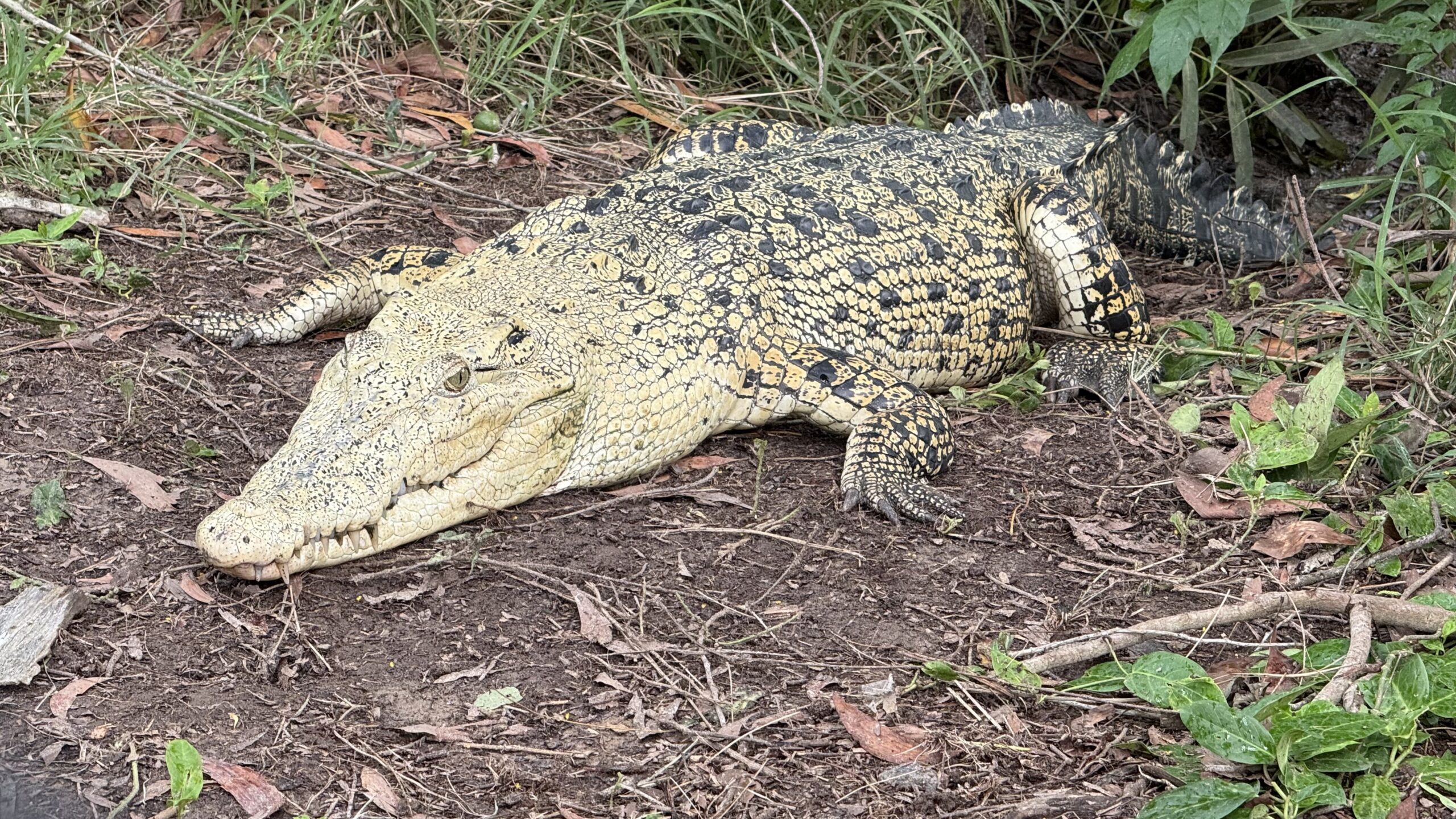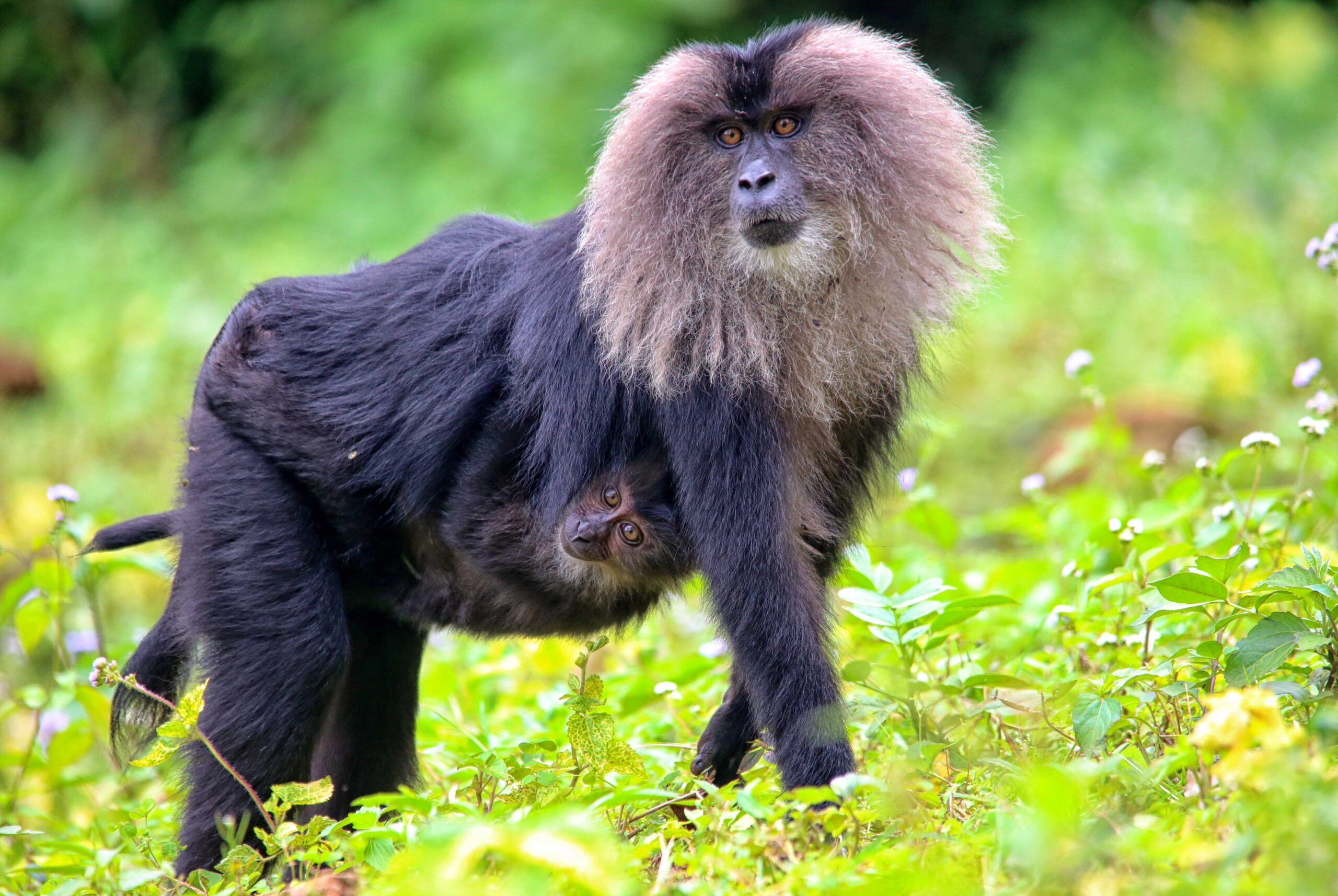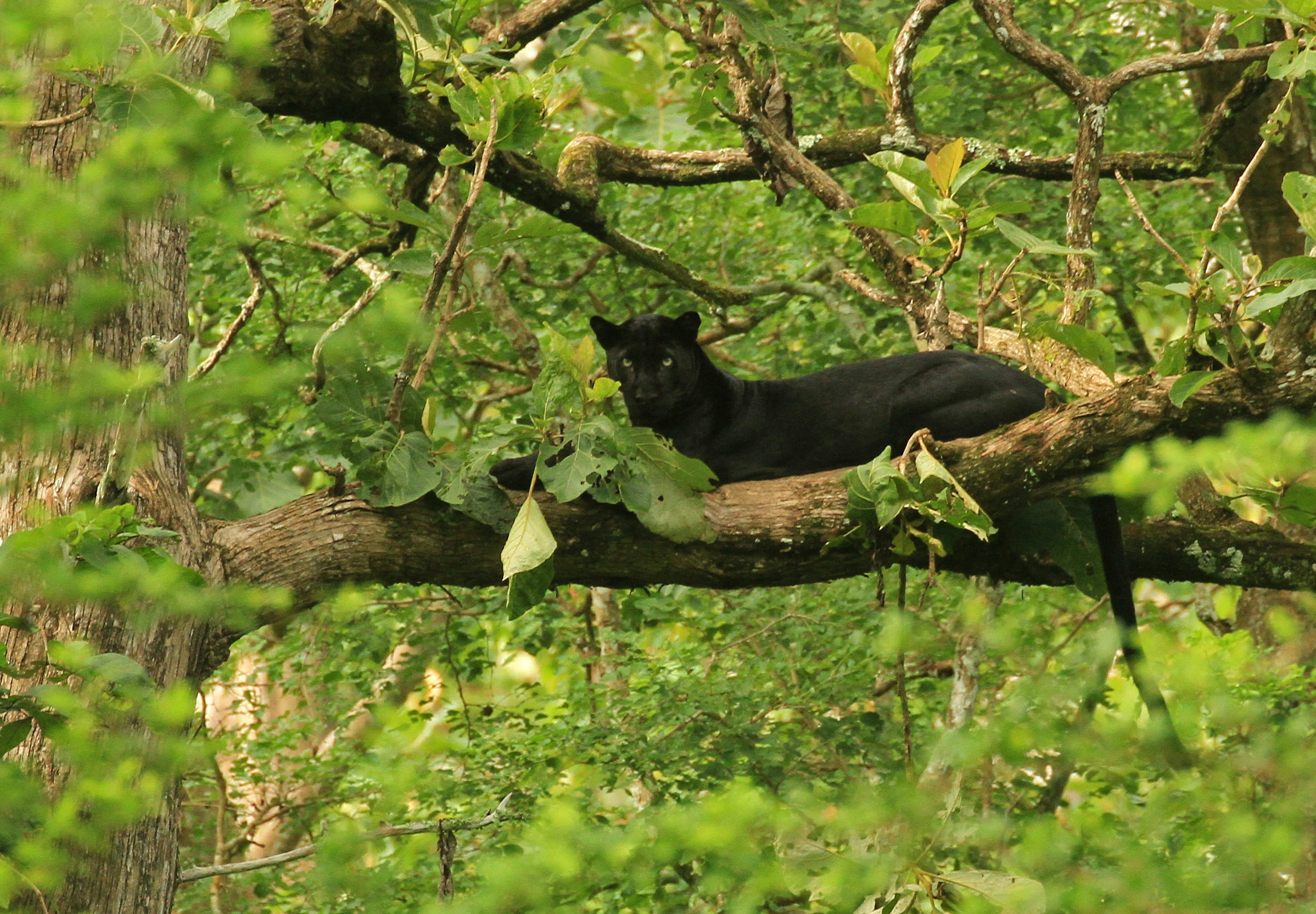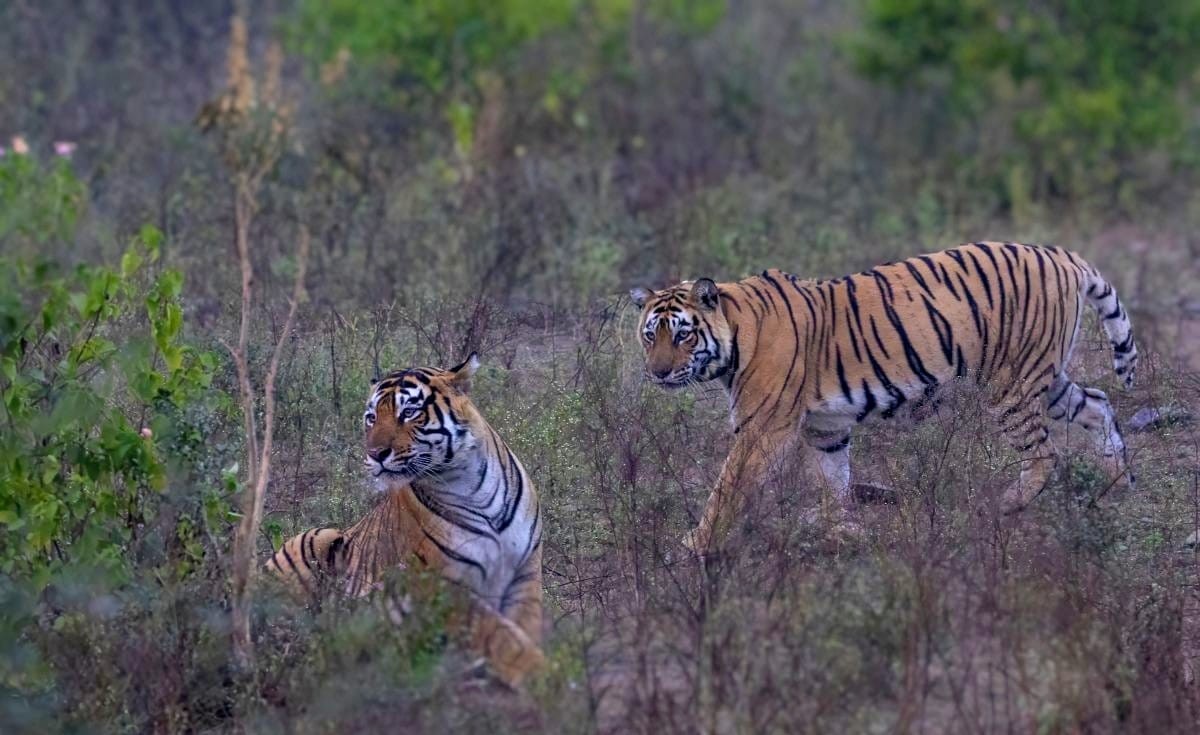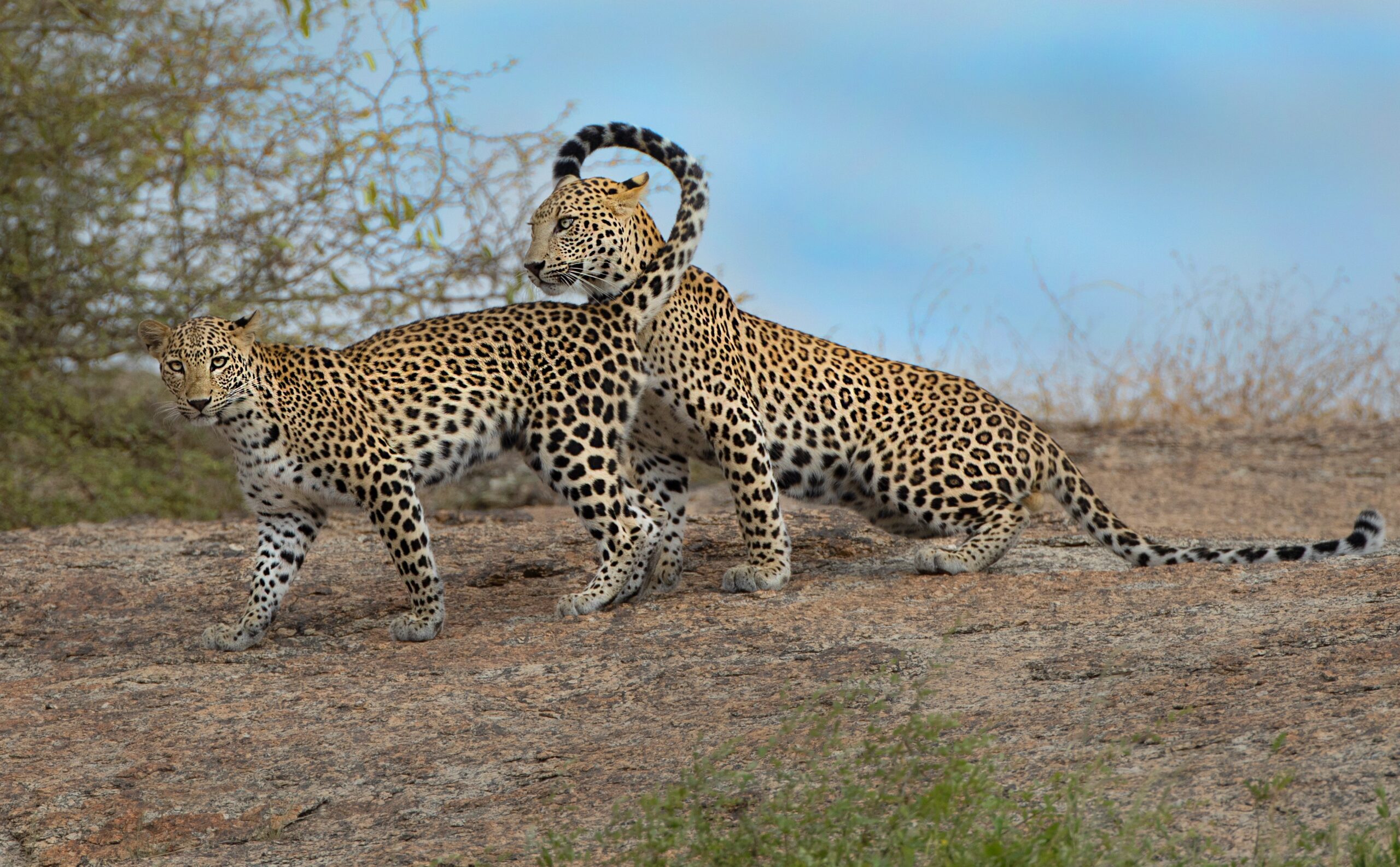When the world dreams of wildlife experiences, it often looks to Africa, vast grasslands beneath amber skies, herds in motion, life unfolding in cinematic grandeur. But to the east lies another kind of wilderness – quieter, more intimate, and deeply human. India’s wilderness is not a place you simply visit; it is a rhythm you enter. It doesn’t perform for cameras; it speaks in whispers, through rustling grass, through temple bells that echo across forested valleys, through stories carried in the wind.
Here, the wild is not separate from life – it lives beside villages, moves through courtyards, and breathes in step with ancient ritual. Every forest becomes a conversation between people and planet, a continuity of worship, coexistence, and reverence that has endured beyond empires and borders. You see it in the tracker’s calm precision, in the weaver’s motif drawn from grassland patterns, in the villager’s quiet prayer to the spirit of a tiger.
In India, the safari is not always a gate you enter, it begins on a village path, over a shared cup of chai, or in the rhythm of a tribal drum. This journey is not about the chase, but about connection, between land and people, silence and sound, myth and daily life. Come not seeking wilderness apart from the world, but the wilderness still living within it. In India, you do not just see wildlife, you witness a country listening to the land that raised it.
In this blog, we take you through 10 less-celebrated, deeply intimate wildlife destinations across India – places where nature and culture meet in quiet conversation, and every sighting becomes a story.
1. Kaziranga National Park (Assam) – Floodplain Kingdom & Forest Song
Habitat & Landscape
Kaziranga stretches across approximately 1,090 square kilometres, covering the districts of Golaghat, Nagaon, Sonitpur, and Biswanath in Assam. Its landscape is a living mosaic of tall elephant grass, marshlands, riverine islands, and patches of semi-evergreen forest. Each year, the Brahmaputra floods these plains, renewing the soil and shaping the rhythm of life for rhinos, elephants, and countless migratory birds.
These floodplains also reveal the story of change. Tea gardens and rail lines cut through what was once a continuous forest, reminding us of the challenges elephants face in a world shaped by human hands. Yet life endures in abundance. Butterflies flit across the grasslands, from Himalayan jesters and peacock pansies to dark beauties, while orchids bloom after the monsoon, turning the park into a garden of color and light.
Wildlife & Conservation
Kaziranga is home to more than two-thirds of the world’s one-horned rhinoceros population, a species once reduced to fewer than 200 but now thriving at over 2400 through decades of vigilant conservation. The park also supports a thriving web of life that includes wild elephants, water buffaloes, swamp deer, sambar and hog deer, alongside tigers, leopards, and the elusive Gangetic dolphin that glides through the park’s waterways.
Among the canopies, the hoolock gibbon, India’s only ape species, swings between trees, while hornbills, kingfishers, fish eagles, and ospreys fill the skies. The nearby Orang forests harbour the endangered pygmy hog and a high density of tigers, while the remoter forests of Northeast India hide rarities like the Asian golden cat and the marbled cat.
Kaziranga is also a paradise for birders, from the Oriental pied hornbill to the rufous-necked and wreathed hornbills, from the watchful storks to the crested serpent eagle. The park’s conservation success, recognized by UNESCO in 1985, stands as one of India’s proudest wildlife stories, a symbol of coexistence built through protection, awareness, and patience.
Each February, the Kaziranga Elephant Festival celebrates the fragile bond between humans and elephants through parades, songs, and local performances, a gentle reminder that harmony is still possible.
Communities & Culture
Around Kaziranga live ethnic communities like Bodo, Mishing, Rabha, Deori, Karbi, Tiwa, Sonowal – communities that have coexisted with the flood cycles and forest life for centuries. Their dance, weaving, folklore, and river rituals are woven into how the park is understood – not apart from it. Villagers speak of rhinoceroses in their stories: how the rhino is a forest guardian, how floods will carry them south, how the rhino’s horn warns us of balance. The name “Kaziranga” itself may emerge from an old love legend: “Kazi” and “Rangai”.
Why Go?
Because Kaziranga reminds you how generous the wild can be. Ride through tall golden grass as rhinos graze in the morning mist, listen to gibbons calling from the canopy, and watch rivers turn to mirrors under the sun. Venture further east to Maguri Beel, near Dibru Saikhowa National Park, a shimmering wetland where migratory birds gather and still waters hum with life.
Best Time & Stay
November to April is ideal (post-flood season).
Stay at Diphlu River Lodge.
Thinking of Kaziranga? Discover our Rivers, Rhinos & Rhythms of the East – a Travel Scope journey that brings you closer to Assam’s wild beauty and quiet rhythms.
2. Satpura National Park (Madhya Pradesh) – The Forest That Travels With You
Habitat & Landscape
Stretching across the rugged folds of Central India, Satpura, meaning “Seven Folds,” forms the southern wall of the Narmada Valley and is part of a vast 4000 square kilometer Tiger Reserve, the largest in the country. Its terrain rises and dips through teak and sal forests, sandstone cliffs, ravines, and river meadows shaped by the Narmada and Tapti. At its heart stands Dhoopgarh, the highest peak in Madhya Pradesh, where sunlight first brushes the hills and the horizon stretches endlessly across the Pachmarhi plateau. This is one of India’s least disturbed ecosystems, a wilderness that still feels raw, rhythmic, and ancient.
Wildlife & Whispered Paths
Satpura belongs to the sloth bear, shaggy, solitary, and slow-moving, yet deeply symbolic of this forest’s quiet wildness. Around it thrive tigers, leopards, Indian bison, wild dogs, four-horned antelope, and more than 300 bird species that sweep through bamboo groves and backwaters. The park’s mixed deciduous forests and basaltic ridges create a perfect stage for secretive carnivores like the leopard, the rusty spotted cat, and the jungle cat to move unseen.
Biogeographically, Satpura is extraordinary, a living bridge where species from the Himalayas mingle with those of the Nilgiris. The altitudinal gradient and seasonal shifts make it a year-round theatre of change. Crocodiles bask in the Denwa’s waters, hornbills patrol the canopies, and butterflies bloom in the post-monsoon light.
Communities & Stories
The Gond, Baiga, and Korku communities have lived in harmony with these forests for generations. Their deep understanding of herbs, roots, and pathways turns each safari into a story, one told through footprints, calls, and forest memory. Local legends even whisper that Lord Rama once crossed these hills, his footsteps lingering in shrines like Shabri Dham located in Gujarat.
Why Go?
Because Satpura lets you meet the wild on foot, not from afar. It is India’s only park that welcomes walking safaris guided by naturalists and trackers who reveal the forest at eye level. Drift silently on a canoe safari along the Denwa backwaters, where crocodiles slide beneath the surface and birds nest on quiet mudflats. Or spend the night camping in the buffer forest, listening to owls and civets under a sky unbroken by noise or light.
Best Time & Stay
October to April, when the forest breathes its clearest air and life crowds around the water.
Stay at Reni Pani Jungle Lodge.
Dreaming of Satpura? Discover Where Legends Live and Tigers Roam, a Travel Scope journey into Central India’s wilderness and living traditions.
3. Hemis National Park (Ladakh) – Where the Snow Leopard Walks Like a Ghost Among Stones
Habitat & Landscape
High in the Trans Himalayan ranges lies Hemis National Park, spreading over 4,400 square kilometres of alpine desert, glacial valleys and rocky ridgelines. The air is thin, the silence immense, and life clings to the cliffs. Blue sheep and Himalayan ibex climb impossible slopes, red foxes and Tibetan wolves prowl the ridges, and somewhere above them, unseen yet ever present – the snow leopard – the Grey Ghost of the Himalaya, watches.
Wildlife & Conservation
Tracking the snow leopard here is one of the world’s most profound wilderness experiences. The terrain is unforgiving, the camouflage flawless, and the cat almost mythical in its elusiveness. What makes sightings possible are the extraordinary trackers, men and women whose knowledge of the land, patience, and sharp eyes turn the impossible into a quiet miracle. From a ridge hundreds of metres away, they can sense a movement, a shadow, a pattern in the snow that tells a story few others could read.
Hemis is also a living example of coexistence. The Snow Leopard Conservancy India Trust works with local herders to reduce conflict through livestock insurance, predator-safe corrals, and responsible tourism. What began in the village of Rumbak has now spread to Ulley, Stok, Mangyu, and parts of Nubra, where conservation-led tourism sustains both wildlife and livelihoods. Across these highlands, snow leopards, wolves, and ibex share space with people who see themselves as part of the same landscape.
Communities & Stories
In Ulley and Rumbak, villagers no longer fear the leopard’s call. They share their world with it, adjusting grazing routes, building safe enclosures, and welcoming travellers into their homes. Homestays run by these families invite you to sip butter tea, listen to tales of the mountains, and watch prayer flags flutter over frozen streams. Here, conservation is not an idea. It is a way of living shaped by respect, endurance, and faith in the unseen.
Why Go?
Because the wild here tests humility.The air is thin. Silence is deep. A single pawprint or call becomes everything; even if you don’t see the cat, you feel its presence.
Best Time & Stay
The tracking season runs from November to April, with February to April offering the best chance of sightings.
Stay at Snow Leopard Lodge, Ulley, or House of Rumbak.
Drawn to the wild heart of Ladakh? Discover Ladakh: Of Stone and Silence, a Travel Scope journey through a land where the snow leopard moves like a secret between the stones.
4. The Great Rann of Kutch (Gujarat) – Salt, Sky & the Wild Ass
Habitat & Landscape
Once a shallow inlet of the Arabian Sea, the Great Rann of Kutch slowly transformed into a vast salt marsh through centuries of tectonic shifts and sedimentation. Today, it stretches over five thousand square kilometers, a white wilderness where earth and sky merge in silence. For most of the year, it lies parched and gleaming; during the monsoon, it floods entirely, turning into a temporary sea.
This surreal landscape connects with the Little Rann of Kutch, a protected ecosystem that forms the heart of the Wild Ass Sanctuary, home to the last herds of the Asiatic wild ass. These fawn coloured equids roam freely across the salt plains, moving between raised islands of scrub and thorn, known locally as bets, in search of food and water. On the surface, the Rann appears barren, yet life thrives here – foxes, wolves, hyenas, and desert cats shelter among the shrubs, while flamingoes, cranes, and pelicans turn its shallow wetlands into a painter’s canvas.
At dawn, the salt plains shimmer gold, and as the sun rises, mirages ripple across the horizon. The few elevated outcrops, or dungars, rise like sentinels above the flats, offering wide views of a land that feels timeless.
Wildlife & Sightings
The Asiatic wild ass is the spirit of this land – swift, stoic, and perfectly adapted to desert extremes. Around it, a living web unfolds. Nilgai, desert foxes, Indian wolves, jungle cats, and hyenas roam the salt edges, while the brackish wetlands come alive with greater and lesser flamingoes, cranes, bustards, lapwings, and a striking range of raptors, including imperial eagles, peregrine falcons, kestrels, and owls that rest on the flats at dawn.
Each winter, the Rann becomes one of India’s greatest birding arenas. Flocks of demoiselle cranes and sociable lapwings sweep across the flats, while Syke’s nightjars, desert warblers, and barbary falcons test the patience of every observer. Here, the experience is not of chasing wildlife but of waiting, watching, and letting the land reveal its quiet rhythm.
The Rann is poised to enter a new chapter in India’s conservation story. Project Cheetah, launched in 2022, began the return of African cheetahs at Kuno National Park in Madhya Pradesh. Meanwhile, Banni Grasslands, near the Great Rann of Kutch, has been designated as the state’s future cheetah breeding and conservation site. In 2023, the government approved plans for India’s first cheetah conservation breeding centre there, spanning around 500 hectares with open mating enclosures.
Prehistoric & Geological Stories
Kutch holds stories older than empires. On Khadir Bet Island, excavations have uncovered settlements that date back 7000 years, long before the Harappans, showing how humans adapted to this sea of salt and shifting shoreline. The ancient site of Dholavira, a Harappan city with an intricate system of water reservoirs and stone-built streets, lies within reach of the Rann and offers a striking window into India’s earliest civilizations. This ancient land later saw the Mauryan and Gupta empires, the Jadeja dynasty, and even colonial conflict during the Indo-Pakistani war of 1965.
Communities & Culture
Life here is woven of salt, soil, and survival. The Rabari, Ahir, Meghwal, and Agariya communities live around the Rann, carrying traditions shaped by its extremes. The Agariyas, for example, harvest salt from the Little Rann; their labor powers over 30 % of India’s salt output. Their animals, camels, goats, and sheep, travel with them across the flats. Their songs, crafts, and stories pulse with the rhythm of wind and salt. In their hands lie embroidery, mirror work, and Rogan painting – bold against the white plains.The adjoining Banni Grasslands Reserve, one of Asia’s largest, is now a conservation priority – rewilding grasslands, protecting migratory birds, and exploring cheetah reintroduction.
Why Go?
Because here, the landscape is the safari. The silence is vast, and the drama lies in its restraint. Walk across a sheet of salt that stretches to the horizon, watch a wild ass vanish into the mirage at dusk, and listen to the wind sweep through a land that remembers both ocean and desert.
Best Time & Stay
November to February is ideal, when migratory birds arrive and the Rann glows under cool skies.
Stay at Rann Riders, Dasada.
Dreaming of the Great Rann? Step into our Gujarat and Rajasthan Itinera – a Travel Scope exploration of Gujarat’s wild frontiers, where salt plains shimmer under starlight.
5. Panna National Park (Madhya Pradesh) – Revival in Tiger Land
Habitat & Landscape
Panna is where the tiger reclaims its kingdom. Spread across 542 square kilometers of dry deciduous forest, rugged plateaus, and gorges shaped by the Ken River, this landscape teems with life once again. The park shelters leopards, sloth bears, hyenas, wolves, crocodiles, and more than 200 bird species, all thriving in the mosaic of forests, grasslands, and riverine corridors. From the Madla Gate along the Ken River valley to the Hinauta Plateau, safaris reveal soaring vultures, falcons, and the occasional tiger resting in the cool shade of Dundhwa Gorge, one of the park’s most breathtaking viewpoints. Once famous for its diamond mines, Panna now shines brighter for its natural wealth, its wilderness glinting under a patient sun.
Wildlife & Comeback
Once silenced by poaching, Panna has risen again as one of India’s greatest conservation success stories. The tiger, reintroduced after total local extinction, has reclaimed its place as the forest’s beating heart, its low growl once again echoing through the gorges and grasslands. Around it, life thrives in harmony: leopards stalk the ridges, sloth bears shuffle through mahua groves, and Indian wolves move quietly across open plateaus. Deer herds ripple like shadows through the sal forests, while along the Ken River, gharial and mugger crocodiles glide past reed beds alive with Indian skimmers, Shaheen falcons, and circling vultures riding the thermals. Every sighting here feels like an act of renewal – a reminder that wilderness, when given time and faith, remembers how to breathe.
Communities & Legends
Around Panna live the Gond, Baiga, and Korku communities, whose lives remain intertwined with the forest. They gather herbs, tell seasonal tales, and carry forest wisdom in their songs and paths. But the Pardhis are the ones whose story has shifted dramatically. Once nomadic hunters whose deep skills in tracking and mimicry made them both feared and vital, many Pardhis joined the Walk with the Pardhis programme – a partnership of the Last Wilderness Foundation, Taj Safaris, and the forest department. Through this, they transformed their knowledge into guardianship.
One of their own, Reesna Pardhi, became the first Pardhi woman to train as a nature guide in Panna. She leads forest walks, shares the lore of her community without shame, and inspires children to see that change can grow out of the old forest paths. Today, her presence is a bridge – between tradition and conservation, between community and wilderness.
[Source: Nature in Focus – Community Changemaker: Reesna Pardhi]
Why Go?
Because Panna is a lesson in resilience, a forest healing from silence. Track tigers along the Ken, drift on boat safaris through mirrored waters, or walk to Pandav Falls, where the sound of water replaces the echo of axes. Stay at Sarai at Toria, a riverside retreat by conservationists Raghu Chundawat and Joanna Van Gruisen, whose work reflects the same faith that rebuilt this land. Nearby lie Ajaygarh and Kalinjar forts, Raneh Falls, and the Khajuraho temples, where stone and wilderness still whisper to one another.
Best Time & Stay
October to April, when the forest thrives and wildlife gathers near the river.
Stay at Sarai at Toria for an experience that bridges conservation, culture, and quiet renewal.
Called by the forest’s quiet resilience? Discover Rituals, Rivers & Rising Faiths, a Travel Scope journey, where tigers walk restored paths and the land learns to breathe again.
6. Bhitarkanika National Park (Odisha) – Mangrove Worlds & Crocodile Shadows
Habitat & Landscape
At the meeting of the Brahmani, Baitarani, and Dhamra rivers lies Bhitarkanika National Park, a watery labyrinth of creeks, estuaries, and mangrove forests covering over 145 square kilometres, within a larger wildlife sanctuary of about 672 square kilometers. Once part of the Gahirmatha estuarine system, this region is now India’s second-largest mangrove ecosystem after the Sundarbans. Here, saltwater and silt weave together a world of more than 80 species of mangroves, from the aerial roots of Rhizophora to the salt-exuding leaves of Avicennia. During high tide, the forest seems to float; when the waters recede, it exhales mud and mist.
Wildlife & Water Stories
Bhitarkanika is home to one of the largest populations of saltwater crocodiles in Asia, with more than 1,800 individuals recorded, including a few that are over six meters long. As boats move through the narrow creeks of Dangamal and Kalibhanjadiha, crocodiles slide quietly from the banks, leaving ripples that fade into silence.
The mangroves host kingfishers, herons, darters, and open-billed storks, while migratory flocks fill the sky from November to February. The surrounding wetlands also shelter Indian pythons, water monitors, smooth-coated otters, and spotted deer. At nearby Gahirmatha Beach, the sea becomes a nesting ground for thousands of olive ridley turtles, linking forest to ocean in a single pulse of life.
Communities & Culture
The people of Bhitarkanika live in rhythm with water. Fisherfolk, crab catchers, and honey collectors know the tides by instinct and the mangrove channels by scent. Their homes and songs carry the language of rivers.
Among these rivers, the Baitarani holds a sacred place in Odisha’s spiritual geography. Flowing from the Gonasika hills in Keonjhar, it is mentioned in ancient scriptures as the river one must cross to reach Vaikuntha, the divine realm. Its confluence here is not just geographical but mythological – a meeting of life, death, and renewal that has shaped local folklore for centuries.
Why Go?
Because Bhitarkanika is a forest that moves with the tide. Your safari is a boat journey through emerald corridors where crocodiles bask like carved relics and birds trace calligraphy in the air. You drift, you listen, and the mangroves tell their quiet, breathing stories.
Best Time & Stay
October to March is the best time, when waters are calm and birdlife is at its peak.
Stay on a Luxurious Catamaran Cruise, or Rambha Palace.
7. Valparai (Tamil Nadu) – Rainforest Threads Between Tea
Habitat & Landscape
Perched at about 3,500 feet in the Anamalai Hills of the Southern Western Ghats, Valparai is where rainforest and plantation meet. Once dense forest, much of this plateau was reshaped during British times into vast stretches of tea and coffee, with roads carving through slopes once ruled by elephants and macaques. Yet the wild persists – sometimes even more quietly than before.
Here, mist hangs over emerald tea fields and fragments of evergreen forest connect to the Anamalai Tiger Reserve, creating one of India’s richest biodiversity corridors. The Western Ghats themselves are among the 10 global biodiversity hotspots, home to over 400 bird species and 100 mammals, many found nowhere else. In these valleys, the ancient shola-grassland mosaic – high-altitude forest groves ringed by rolling meadows, shelters species that have evolved in isolation for millennia.
Wildlife & Birds
Valparai belongs to the Lion-tailed Macaque, a rare and elusive primate with a silver mane and a gaze that holds the memory of the forest. Found only in the Western Ghats, it moves through the shade trees above tea gardens, leaping between fragments of rainforest that cling to these hills. Here, elephants wander through plantations at dusk, great hornbills call from fig trees, and Nilgiri langurs, brown mongooses, and Malabar giant squirrels share the same canopy. Over 300 bird species thrive in this mosaic, from the dazzling trogon to the endemic laughing thrush.
Ecology & Conservation
Valparai is part of the Anamalai–Parambikulam landscape, a living bridge between Kerala and Tamil Nadu’s forests. Conservation organisations like the Nature Conservation Foundation (NCF) have been working with local tea estates to restore native rainforest patches, build elephant corridors, and design early-warning systems that reduce conflict. Their Rainforest Interpretation Centre offers rare insight into how people, plantations, and wildlife coexist in this delicate balance. Each rewilded acre is a small return – a forest rethreaded, a corridor renewed. Over the years, hornbills have come back to nest in restored trees, and elephants use the same trails that were once lost to tea.
Communities & Culture
The slopes are home to indigenous groups like the Malai Malasar and Malaimalai Adiyar, who have long lived in harmony with these forests. Many plantation workers are now part of local conservation networks, guiding visitors, monitoring wildlife, and planting native species around the estates. Life here is an interwoven story – tea, forest, rain, and resilience.
Why Go?
In Valparai, the forest is never far. Mist drifts over winding tea slopes, cicadas hum through the rain, and waterfalls flash between bends in the hills. You wake to birdsong, sip tea as clouds roll through the verandah, and watch the valley change colour with the light. Here, the wilderness isn’t something you enter – it quietly surrounds you.
Best Time & Stay
June to March is ideal – the monsoon brings the forests alive, with rain misting through tea slopes and streams brimming again. The post-monsoon months from September to March offer clearer skies, active wildlife, and perfect light for long walks.
Stay at Sinnadorai Tea Plantation.
Chasing mist and monsoon magic? Discover our journey Western Ghats Itinerary – a Travel Scope trail through the Western Ghats, one of India’s richest wildlife corridors, it’s where nature still hums in green silence.
8. Kabini/Nagarhole Tiger Reserve (Karnataka) – Forests by Water and Shadow
Habitat & Landscape
In the folds of Karnataka’s Western Ghats, where water curves through forest and memory, lies Nagarhole National Park – officially the Rajiv Gandhi National Park -one of India’s most biodiverse tiger habitats. Within it flows the Kabini River, whose shimmering backwaters lend their name to the region. This is not a separate sanctuary, but a living heart within Nagarhole’s vast 1,000 square kilometers. This landscape of moist and dry deciduous forests, teak groves, and riverine corridors forms part of the Nilgiri Biosphere Reserve, linking the protected forests of Kerala, Tamil Nadu, and Karnataka into one continuous wildlife belt.
At its heart lies the Kabini Reservoir, where the river fans into wide backwaters bordered by bamboo thickets and grasslands. At dawn, the mist rises off the water like breath, and the forest emerges – green, wet, and filled with movement. This is a land that remembers both drought and abundance, where water writes the story of the wild.
Wildlife & Impression
Kabini’s claim to fame rests not only on its thriving tiger population but on a creature rarer still – the Melanistic Leopard, known to locals as Saaya – the shadow. Sleek, elusive, and almost mythical, this black panther moves through fig trees and moonlit clearings, its dark coat absorbing light and legend alike. Few forests in the world offer a chance to see one, and fewer still hold it within such living abundance. The forest teems with life. Elephants dominate the landscape, their herds gathering in the hundreds along the backwaters during summer – one of the largest elephant congregations on Earth. Dholes hunt in coordinated packs, leopards rest in the high branches, and gaur, sambar, and deer graze quietly below. The air is alive with birds – bar-headed geese, hornbills, ospreys, and the magnificent white-bellied woodpecker, whose rhythmic tapping echoes through teak groves. Smooth-coated otters play along the water’s edge, while flying squirrels glide soundlessly under the canopy’s shade.
Communities & Culture
For generations, the Soliga and Jenu Kuruba tribes have called these forests home. Once foragers and honey gatherers, they now serve as guides and conservation allies, their forest wisdom passed down through story and song. To walk with them is to see the jungle differently – as a living, breathing companion rather than a wilderness to conquer.
Why Go?
Because Kabini is a story told in silence and shadow. You wait beside the river as dusk deepens, listening for a soft growl or a ripple in the water – the moment when the forest exhales and reveals itself. It is a place where water holds memory, trees hold history, and the wild still walks with grace.
Best Time & Stay
October to May brings clear skies and vibrant sightings, while the monsoon months turn Kabini into a lush, dreamlike forest alive with sound and colour.
Stay at Kuruba Safari Lodge by Evolve Back, Kaav Safari Lodge, or Coorg Wild Walk by CGH Earth.
Answer the call of Karnataka’s wild heart. Discover The Quiet Heart of the South, a Travel Scope journey where history, wildlife, and monsoon rhythms meet beneath the same sky.
9. Sariska Tiger Reserve (Rajasthan): The Forest That Returned
Habitat & Landscape
In the ancient folds of the Aravalli hills, Sariska stretches across 866 square kilometers of valleys, plateaus, and dry deciduous forests. Once silent, these woods now whisper again with life – peacocks calling at dawn, langurs leaping across ruins, and wind stirring through the dhok trees. The landscape shifts between grasslands, rocky outcrops, and watering holes, forming a mosaic of wilderness that feels both rugged and tender.
Wildlife & Renewal
Sariska stands as one of India’s most powerful stories of recovery. In the early 2000s, the reserve lost all its tigers to poaching, a wound that cut deep into India’s conservation heart. What followed was unprecedented – the country’s first tiger relocation programme, an act of faith and persistence.
Today, the forest breathes again. Tigers, leopards, hyenas, jackals, sambars, and peafowls share the land once more. Each pugmark on the dust is a quiet signature of survival, proof that wilderness, when given time, finds its rhythm again.
Communities & Conservation
Several villages once within the park’s core voluntarily moved to new settlements, opening space for the forest to heal. Many of their residents now serve as forest guards, trackers, and eco-tourism hosts – turning old relationships of dependence into new ones of protection. Around the forest’s edge, temples, stepwells, and fort ruins tell human stories written into the land.
At the Kankwari Fort, echoes of history mix with the cries of peacocks, while the Neelkanth temples stand as timeless witnesses to the forest’s return.
Stories & Faith
Here, devotion and conservation walk side by side. Villagers still light lamps for Bhairon Dev, believed to be the guardian spirit of the forest. Offerings and prayers mingle with conservation pledges, a rare place where reverence and responsibility have learned to coexist.
Why Go?
Because Sariska is not just a wildlife destination, it is a parable of healing. It shows how a landscape can return from loss when people choose restoration over retreat. Walk its trails and you feel it – resilience rooted in soil, faith, and silence.
Best Time & Stay
November to May, when the forest is cool, clear, and alive with movement.
Stay at Sariska Lodge.
10. Jawai and Ramathra (Rajasthan): Wild Beyond National Parks
Habitat & Landscape
These two destinations show that wildlife doesn’t need boundaries.Jawai’s granite hills and scrublands hide one of India’s densest leopard populations, while Ramathra sits at the crossroads of dry forest, farmland, and ancient ravines that double as wildlife corridors.
Wildlife & Encounters
In Jawai, leopards move with quiet authority across granite hills that double as shrines, their presence woven into local faith. Among these wild scrublands, wolves are sometimes seen at dusk – elusive and watchful along the edges of silence. In Ramathra, the wilderness softens into farmland, where hyenas wander moonlit ridges and foxes slip through the fields between villages.
Communities & Relationships
The Rabari herders of Jawai and the farmers of Ramathra share a centuries-old pact with nature – coexistence, not control. Here, shepherds double as guides, and village homes double as conservation watchpoints.
Conservation Ethos
Ramathra’s conservation story is quietly profound. Once abandoned farmland, it has been patiently rewilded through care and community effort. Grasslands have been restored, water bodies desilted, and native species nurtured back to life. The fort’s custodians work closely with nearby villages, encouraging sustainable grazing, planting indigenous trees, and creating livelihood programs that move in rhythm with nature.
In Jawai, conservation is guided not by boundaries but by faith. The Rabari herders have lived beside leopards for generations, believing them to be manifestations of their goddess. This deep spiritual respect has shaped one of India’s most extraordinary examples of coexistence, where people and predators share the same land in quiet harmony.
At the heart of Jawai’s revival stands Shatrunjay Pratap Singh, a lone warrior who fought tirelessly against destructive mining that once threatened these granite hills. His campaign led to the cancellation of mining licenses and helped protect the landscape that now shelters Jawai’s leopards and its rich web of life.
Together, these stories remind us that true conservation is not enforced from above. It is lived through patience, belief, and the courage to stand for the wild.
Why Go?
Because in Jawai and Ramathra, wilderness is not performed, it is lived. You move at the pace of the land – watching leopards fade into granite, herders return with the dusk, and the light turn silver over still water. Here, silence is not absence; it is presence.
Best Time & Stay
October to March, when the air is clear and the wild moves freely between river and rock.
Stay at Sujan Jawai, or Bera Safari Lodge, for the leopard country experience.
Ramathra Fort for the quiet grace of Rajasthan’s restored wilderness.
Seeking Rajasthan’s wild soul? Discover our Rajasthan Beyond Palaces – a Travel Scope trail through leopard hills, desert scrub, and village lands where the wild still moves beside tradition.
Threads That Bind the Wild – Through the Lens of WATCH
These ten stories are not just destinations; they embody the WATCH spirit: Wildlife, Adventure, Tribes, Conservation, Habitat:
- Wildlife: Each place is a page in India’s natural story – from elusive cats and majestic elephants to marsh birds and forest dwellers.
- Adventure: You don’t just see the wild – you walk, paddle, drift, and move through it, discovering its pulses, not just its panoramas.
- Tribes & Communities: The wild is shared. From pastoral lore in Rajasthan to fisherfolk in Bhitarkanika, people and forests are coauthors of every place.
- Conservation: These are living landscapes, resilient and resisting. Every region tells how forests heal, faunas return, and community guardianship matters.
- Habitat: India’s wild is many worlds – mangroves, deserts, floodplains, alpine ridges, rainforests – each terrain a universe worthy of attention.
Together, these threads form a tapestry that reflects a promise: to explore India’s wilderness not as spectators, but as conscious participants.
The wild is calling – not to be watched, but to be felt. If these stories stirred something within you, let us craft a journey where nature is not an itinerary stop, but a rhythm you live in. Contact Travel Scope to begin your personalized wilderness experience.
FAQ
Q1. Why is India a unique wildlife destination compared to Africa or other countries?
India’s wildlife is deeply intertwined with local communities, culture, and spiritual traditions. Unlike Africa’s vast savannah safaris, Indian safaris are immersive journeys where nature, people, and myth coexist in living harmony, offering a more intimate and layered experience.
Q2. Which is the best offbeat wildlife destination in India for first-time visitors?
Kaziranga, Satpura, and Jawai are ideal for first-timers seeking exclusivity and meaningful wildlife encounters away from tourist crowds. These destinations offer walking safaris, canoe rides, and village interactions that go beyond traditional jeep safaris.
Q3. What is the best time of year to explore India’s lesser-known wildlife destinations?
The ideal time is generally October to April, when the weather is pleasant, water sources attract wildlife, and park activities are fully operational. Some regions like the Western Ghats come alive during the monsoon months (June–September).
Q4. Are these wildlife experiences suitable for luxury and soft-adventure travelers?
Yes. India’s offbeat parks such as Satpura, Ladakh’s Hemis, and Jawai offer boutique lodges, expert naturalist guides, wellness add-ons, and curated excursions designed for high-end travelers seeking comfort along with immersive nature experiences.
Q5. Can I see tigers and snow leopards in these destinations?
Yes – Satpura, Panna, and Sariska are rising tiger reserves, while Hemis in Ladakh is renowned as one of the best places in the world to track snow leopards in the wild, supported by community-led conservation initiatives.
Q6. How does tourism support conservation in India’s wildlife regions?
By staying at community-owned lodges, participating in nature walks guided by local trackers, and choosing responsible itineraries, travelers directly contribute to wildlife protection, habitat restoration, and livelihood support for indigenous communities.
Q7. What makes India’s wildlife experiences culturally rich?
In India, wildlife is not separate from daily life – tribal folklore, sacred groves, forest deities, and seasonal rituals shape the way humans and animals coexist. Each park is also a living story of tradition and survival.
Q8. Is it safe to travel to these lesser-known wildlife destinations in India?
Yes. These experiences are offered by licensed tourism operators, guided by trained naturalists and governed under strict forest regulations. Lodges ensure guest safety while promoting responsible tourism practices.

